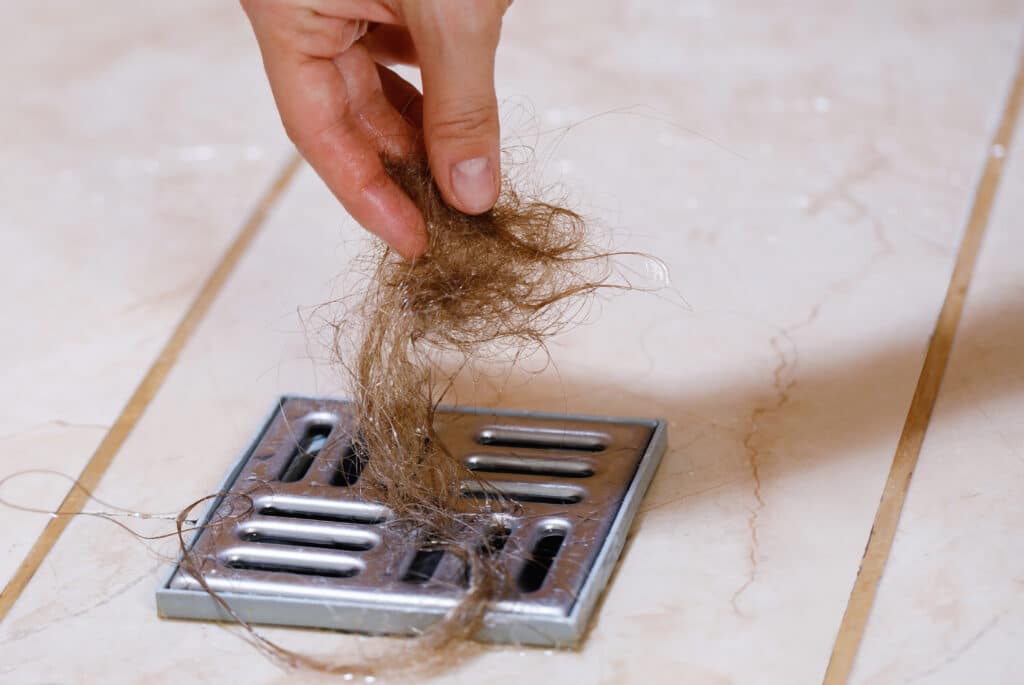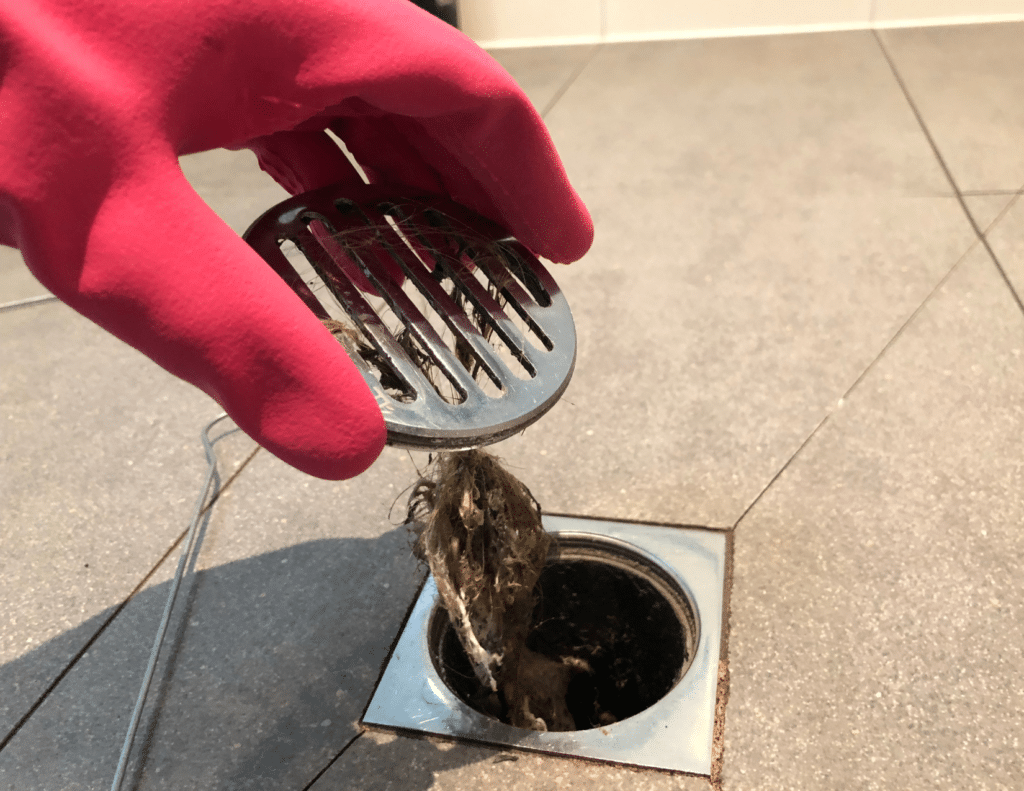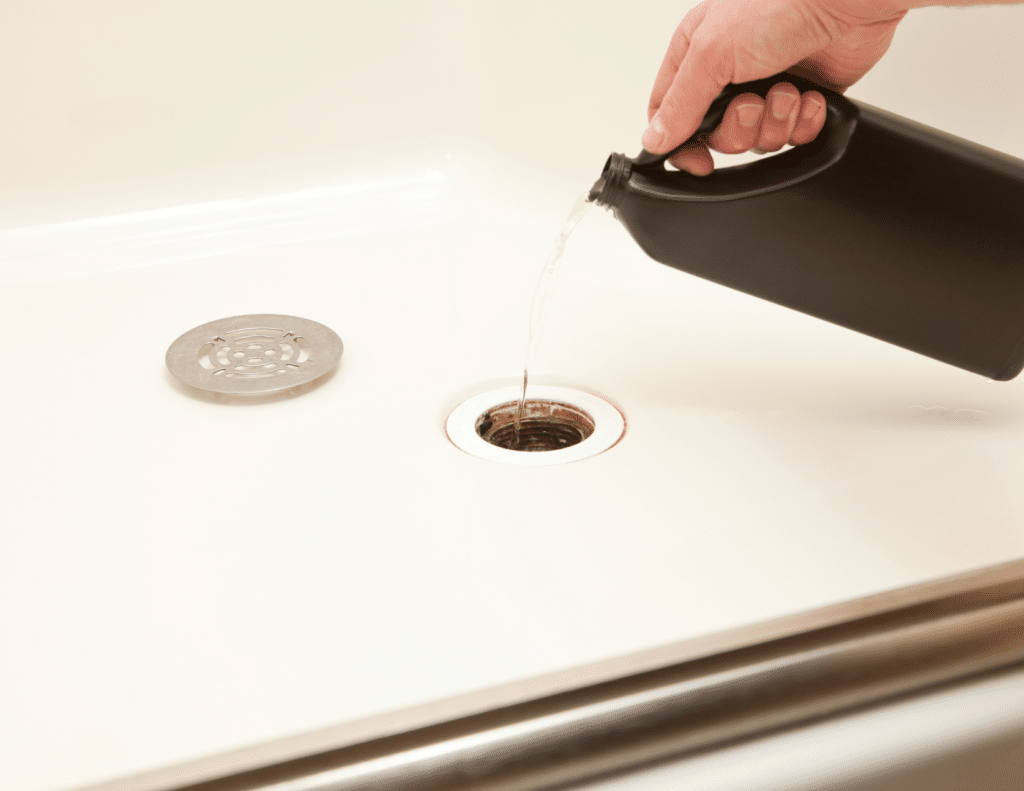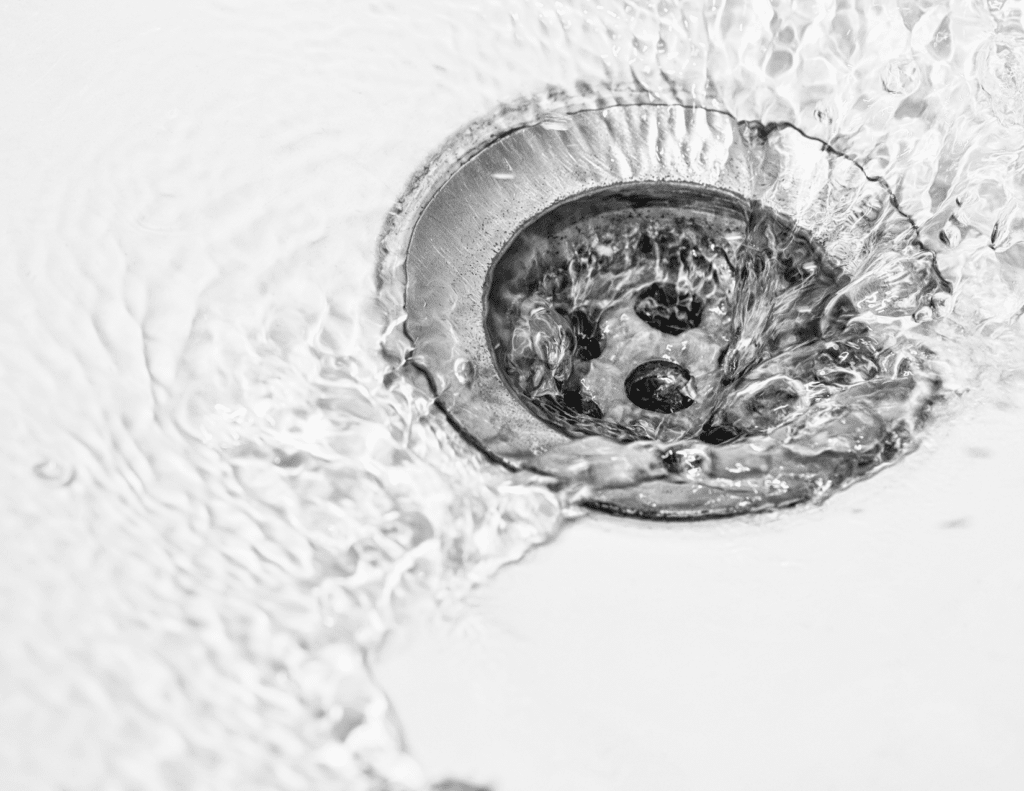Few household chores are as dreaded as dealing with a clogged drain, especially due to hair buildup. Hair, being both resilient and stubborn, can quickly accumulate in drains, leading to slow drainage and unpleasant odors. Fortunately, several effective methods for removing hair from drains don’t require expensive tools or professional assistance. This comprehensive guide will explore techniques and tips to tackle how to remove hair from drains.
Understanding the Problem: Hair Clogs

Before diving into solutions, it’s essential to understand why hair clogs drain in the first place. Hair, whether short or long, easily becomes entangled with other substances like soap scum, grease, and debris. Over time, this amalgamation forms a dense blockage that restricts water flow, causing backups and potential plumbing issues. The shower drain is particularly prone to hair buildup, where we typically wash and groom ourselves.
Preventive Measures

The best way to deal with hair clogs is to prevent them from occurring. While it’s impossible to stop hair from shedding entirely, implementing preventive measures can significantly reduce the frequency of drain blockages.
1. Mesh Drain Covers
Install mesh drain covers in sinks, showers, and bathtub drains to catch hair before it enters the pipes. These covers are inexpensive and easy to install, acting as a barrier against hair and large debris while allowing water to flow freely.
2. Regular Maintenance
Make a habit of cleaning drain covers and removing visible hair buildup regularly. A simple wipe or rinse with warm water can prevent hair from accumulating and causing blockages over time.
3. Hair Catchers
Consider using hair catchers or strainers inside your drains. These devices sit below the drain cover and capture hair and other particles, preventing them from going down the drain. Empty the catcher regularly to maintain optimal drainage.
Effective Techniques to Remove Hair from Drains

Despite our best efforts, hair clogs can still occur. When faced with a stubborn blockage, it’s essential to have effective strategies at hand to clear the drain and restore proper flow.
1. Manual Removal
One of the simplest methods for removing hair from drains is manual extraction. Here’s how to do it:
a. Drain Snake or Zip-It Tool
- Insert a drain snake or Zip-It tool into the drain and maneuver it to hook onto the hair clog.
- Gently pull the tool upward to dislodge and remove the trapped hair.
- Repeat the process until no more hair is extracted.
b. Bent Wire Hanger
- Straighten a wire coat hanger and create a small hook at one end.
- Insert the hook into the drain and fish out the hair clog.
- Dispose of the extracted hair and repeat if necessary.
2. Chemical Drain Cleaners
Chemical drain cleaners can effectively dissolve the clogged hair, but they should be used cautiously due to their harsh ingredients. Follow these steps when using chemical cleaners:
a. Read and Follow Instructions
- Carefully read the instructions on the product label and follow the recommended dosage.
- Wear gloves and protective eyewear to prevent skin and eye irritation.
b. Pour the Cleaner
- Pour the recommended amount of cleaner directly into the drain.
- Allow the cleaner to work for the specified time, usually 15-30 minutes.
c. Flush with Water
- After the designated time has elapsed, flush the drain with hot water to wash away the dissolved hair and debris.
3. Homemade Drain Cleaners
For those who prefer natural alternatives or want to avoid harsh chemicals, homemade drain cleaners can be just as effective. Here are two simple recipes to try:
a. Baking Soda and Vinegar
- Pour 1/2 cup of baking soda into the drain.
- Follow it with 1/2 cup of vinegar.
- Allow the mixture to fizz and work through the clog for 30 minutes.
- Flush the drain with hot water to remove the dissolved hair and debris.
b. Baking Soda and Salt
- Mix 1/2 cup of baking soda with 1/4 cup of salt.
- Pour the mixture into the drain.
- Let it sit for 20-30 minutes.
- Flush the drain with hot water.
c. Boiling Water
- Boil a pot of water.
- Carefully pour the boiling water down the drain in stages, allowing it to work its way through the clog.
- Repeat as needed until the drain is clear.
Maintenance and Prevention

Once you’ve successfully removed the hair clog, it’s essential to implement preventive measures to avoid future blockages. Here are some tips for ongoing maintenance:
1. Regular Cleaning and Maintenance
Make drain cleaning an integral part of your regular household maintenance routine. It’s crucial to clean drain covers and traps regularly; doing so will help to prevent the buildup of hair and other debris, which can lead to blockages.
2. Post-Use Hot Water Rinse
After every use of your sink or shower, flush your drains with hot water. This simple practice can help dislodge any loose hair or small particles that may have been left behind, preventing them from accumulating and causing potential clogs.
3. Monthly Vinegar Rinse
To maintain the cleanliness of your drains, consider conducting a vinegar rinse once a month. Pour a mixture of equal parts vinegar and hot water down the drain. This concoction serves as a natural cleaner that can help dissolve any potential buildup of grime or soap scum and also works effectively to eliminate unpleasant drain odors.
Dealing With Stubborn Clogs With Workhouse
Dealing with hair clogs in drains is a common household challenge, but it can be effectively managed with the right techniques and preventive measures. Whether you opt for manual removal, chemical cleaners, or homemade solutions, addressing hair buildup promptly can prevent costly plumbing issues and ensure smooth drainage in your home. By incorporating these strategies into your cleaning routine, you can keep your drains clear and functional, saving time, money, and frustration in the long run. If you have an extremely stubborn clog or if all else fails, contact a professional like Workhouse Plumbing.







